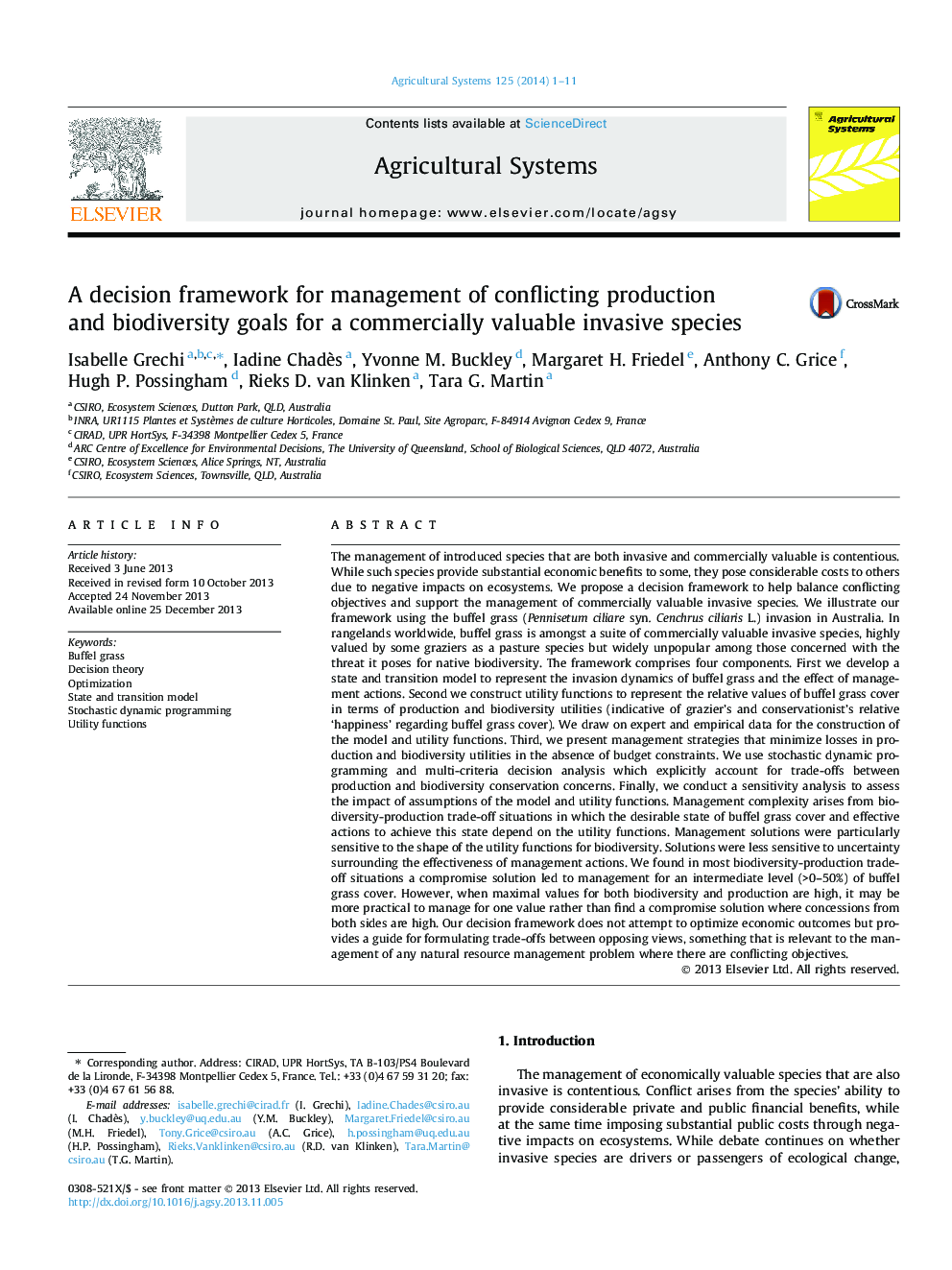| کد مقاله | کد نشریه | سال انتشار | مقاله انگلیسی | نسخه تمام متن |
|---|---|---|---|---|
| 4491277 | 1623245 | 2014 | 11 صفحه PDF | دانلود رایگان |
• Commercially valuable invasive species present a conflict for management.
• We model buffel grass dynamics with production and biodiversity benefits and costs.
• Management solutions are found that account for production-biodiversity trade-offs.
• Solutions are sensitive to the shape of the buffel cover–biodiversity relationship.
• Solutions are less sensitive to uncertainty about the management effectiveness.
The management of introduced species that are both invasive and commercially valuable is contentious. While such species provide substantial economic benefits to some, they pose considerable costs to others due to negative impacts on ecosystems. We propose a decision framework to help balance conflicting objectives and support the management of commercially valuable invasive species. We illustrate our framework using the buffel grass (Pennisetum ciliare syn. Cenchrus ciliaris L.) invasion in Australia. In rangelands worldwide, buffel grass is amongst a suite of commercially valuable invasive species, highly valued by some graziers as a pasture species but widely unpopular among those concerned with the threat it poses for native biodiversity. The framework comprises four components. First we develop a state and transition model to represent the invasion dynamics of buffel grass and the effect of management actions. Second we construct utility functions to represent the relative values of buffel grass cover in terms of production and biodiversity utilities (indicative of grazier’s and conservationist’s relative ‘happiness’ regarding buffel grass cover). We draw on expert and empirical data for the construction of the model and utility functions. Third, we present management strategies that minimize losses in production and biodiversity utilities in the absence of budget constraints. We use stochastic dynamic programming and multi-criteria decision analysis which explicitly account for trade-offs between production and biodiversity conservation concerns. Finally, we conduct a sensitivity analysis to assess the impact of assumptions of the model and utility functions. Management complexity arises from biodiversity-production trade-off situations in which the desirable state of buffel grass cover and effective actions to achieve this state depend on the utility functions. Management solutions were particularly sensitive to the shape of the utility functions for biodiversity. Solutions were less sensitive to uncertainty surrounding the effectiveness of management actions. We found in most biodiversity-production trade-off situations a compromise solution led to management for an intermediate level (>0–50%) of buffel grass cover. However, when maximal values for both biodiversity and production are high, it may be more practical to manage for one value rather than find a compromise solution where concessions from both sides are high. Our decision framework does not attempt to optimize economic outcomes but provides a guide for formulating trade-offs between opposing views, something that is relevant to the management of any natural resource management problem where there are conflicting objectives.
Journal: Agricultural Systems - Volume 125, March 2014, Pages 1–11
